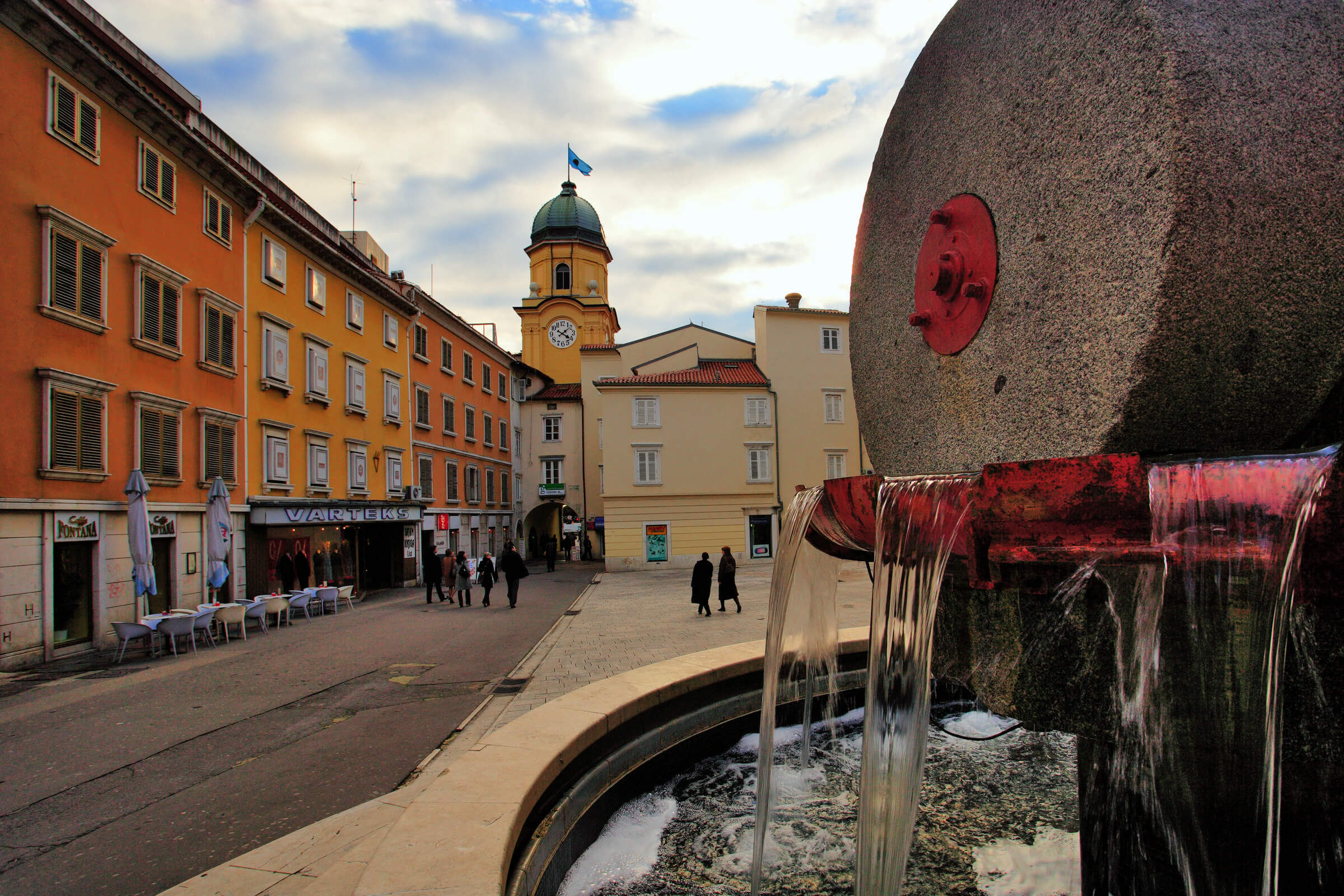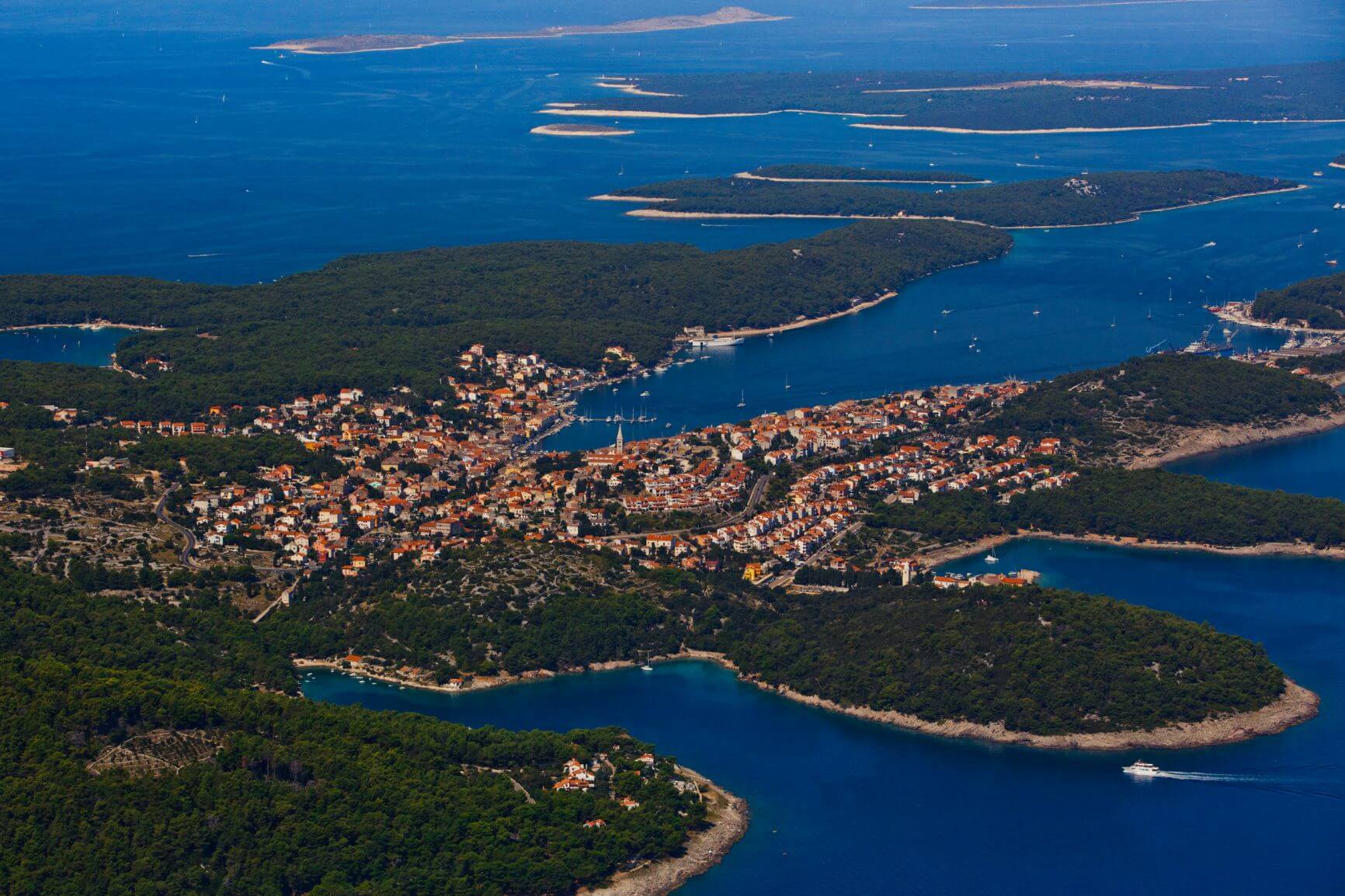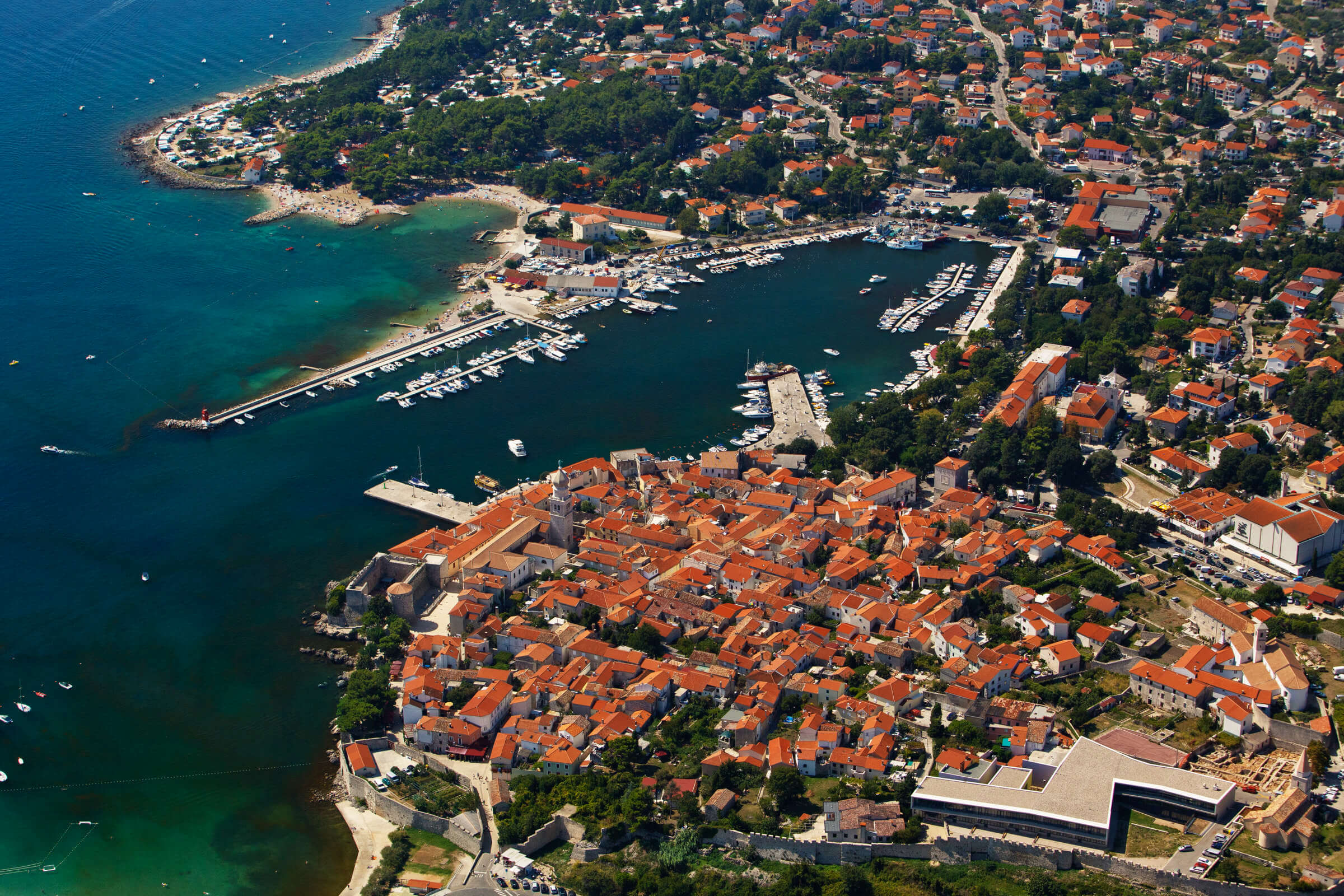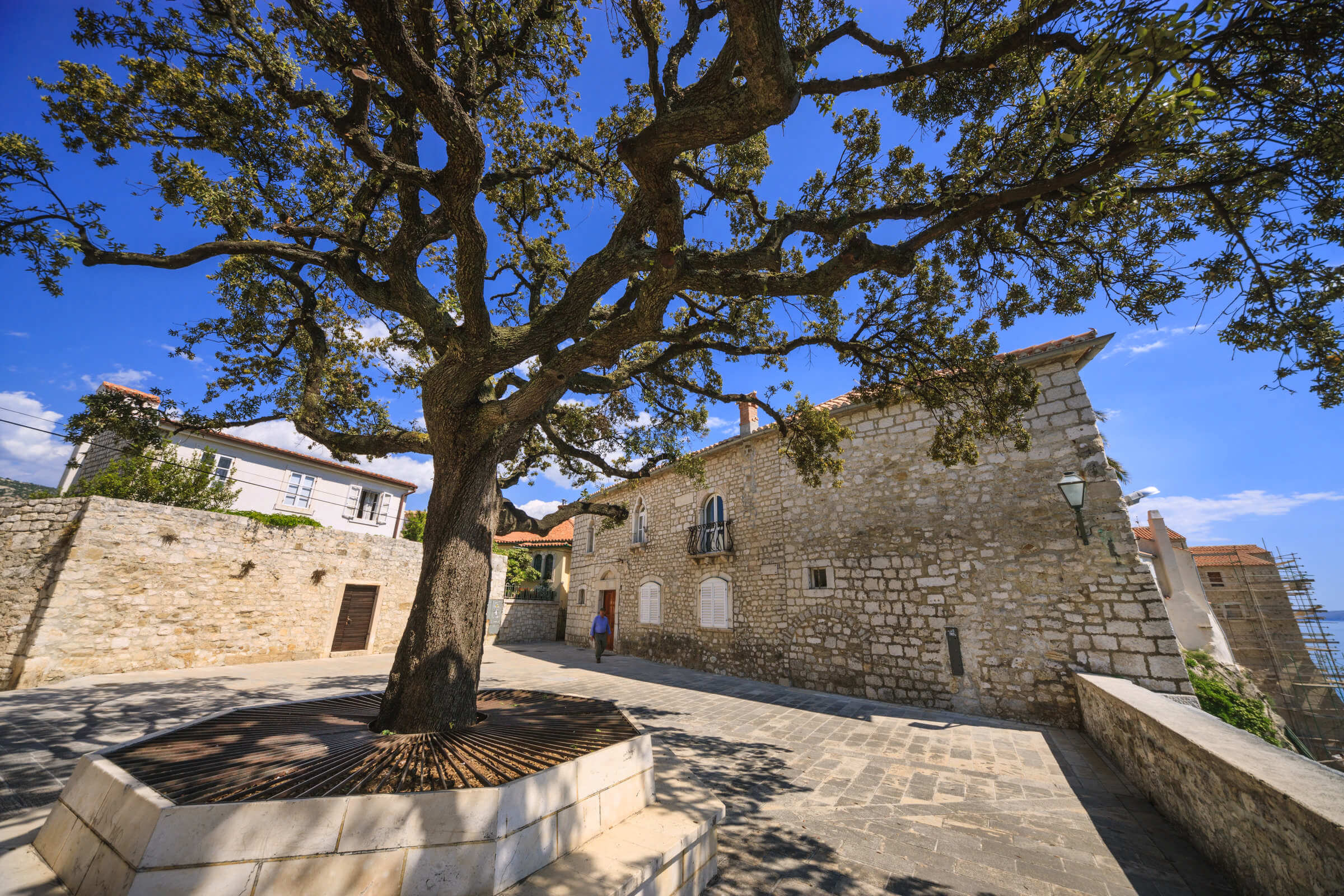August 19, 2020 - If you thought that the entire Croatian coast is about easy-going life, with antique remnants and hot-blooded people who sing all the time under the olive oil tree - you haven’t seen Kvarner Gulf. Kvarner Gulf is also a Mediterranean region in the Adriatic sea and is somewhat similar to Dalmatia, but its culture is totally different. Think the Mediterranean with Austro-Hungarian moderation, diligence, and attention to details.
Kvarner Gulf is bordered by Tuscan-style Istria in the north, a petite arcadia of vineyards, lovely woods with truffles, pleasant coastal towns, beaches, and charming hamlets on the rolling hills. In the south, Kvarner Gulf borders Dalmatia, a region where natural beauties and amazing cultural heritage co-exist with architectural atrocities, traffic mess, and a dose of chaos here and there.
Between rustic Istria and hot-blooded Dalmatia, Kvarner lives its quaint, diligent, and neat life with tourism that was conceived in the glory days of the Austro-Hungarian Empire. In Dalmatia - there are ancient houses and entire towns made of stone and marble. In Kvarner, you will see narrow houses with colorful facades, villas from the belle epoque built as summer residences of a European aristocracy, and lovely houses of Kvarner’s captains with palms and exotic plants they brought from all over the world.
Dalmatia is pretty - for the most part. Yet, its turbulent history heavily influenced by the Ottoman Empire created a culture that sometimes misses keeping all things pretty, neat, and organized. This part of the Mediterranean inclines toward loud emotions that can slightly fog rational thinking, creating a charming dose of chaos and slothfulness (google: fjaka). And that’s why we love it.
Dalmatian chaos gave birth to amazing arts - klapa singing is beyond beautiful and the legendary Malo Misto TV series can stand side-by-side with Jirzi Menzel’s and Fellini’s depictions of small-town life.
But, if you want to experience another kind of Mediterranean - less dramatic and loud, visit Kvarner. The history of Kvarner was somewhat different than Dalmatian history - while Dalmatia was dealing with the attacks of the Ottoman empire, more civil rule of the Venice and Austria defined the largest part of Kvarner area, leaving good infrastructure and carefully tended gardens in front of the lovely houses lining the orderly streets of the neat colorful towns.
Colorful facades of Kvarner vs stone houses of Dalmatia
Opatija
The city of Opatija is pretty similar to Montreux - big fancy, belle epoque houses with lush gardens, parks, and promenades were built as summer residences of European aristocracy. Instead of the Geneva lake, there is an Adriatic sea and lots of palms, but the experience is quite alike. Fancy hotels and restaurants serve the high-class clientele that loves the buzz of luxury and style. Both boast nostalgic scenery of the Charleston age.
Photo by Romulic and Stojcic
Rijeka
Rijeka used to be a Habsburg and Hungarian port from the late 17th century, competing with Austria’s imperial port of Trieste.
And you know ports - they tend to be open-minded, mild-tempered, liberal and outgoing - especially if we are talking about Habsburg ports at the peak of the Empire’s power and ambition.
Rijeka’s historical buildings remind a bit of Vienna or Graz, and its heritage doesn’t have so much to do with the Romans, battles with Ottomans, fortifications, and towers like in Split, as with the industrial revolution, transportation made in the 19th century and the efforts of Austrian and Hungarian empires to spread their influence from Rijeka to the rest of the world.
When you compare the mindset of Rijeka and the big Dalmatian port of Split, you will notice a more conservative, right-wing way of thinking in Split and a more left, open-minded atmosphere in Rijeka. If you are a young woman looking to find a partner to support you in your career, you might want to look for a guy from Rijeka. And if you'd like to find a tall, dark, handsome and macho man, definitely head towards Split. But, don’t expect him to cook for you or do laundry. In Split, they take good care not to risk masculinity as it, as they believe, dissipates when in touch with kitchen utensils, the vacuum cleaner or laundry detergent.

Photo by Romulic and Stojcic
Lošinj Island
Lošinj is incredibly beautiful - and not only for its lovely nature and historic heritage from the 19th and 20th century - it is as neat and tidy as if some Swiss people come regularly to tidy it up. All the houses have colorful facades, neat gardens and clean streets - unlike Dalmatia, Lošinj and Kvarner love it orderly.
No saddening and confusing architectural atrocities that attack the idyllic Mediterranean towns and bays in Dalmatia. People of Lošinj protect its cultural and natural heritage by their architectural choices, keeping in mind that prosperous tourism is not about quantity, but foremost - quality.
A bit of smart strategic planning executed by top brand destination managers, based on a long tradition of Lošinj health tourism, and a bit of ratio driven thinking resulted in sustainable tourism that is equally attractive to inhabitants and tourists. Lošinj people find it a bit funny when their Dalmatian neighbours build a zillion clubs, attract all the partygoers of Europe and then whine because drunk, pissing and vomiting youth wander across amazingly nice Renaissance streets. I mean, duh?! What was the plan - open all those clubs and then organize baroque music festivals for the rich European aristocracy in them?
Lošinj is branded as an “Island of Vitality” - and this well-throughout tourism direction prevented mass and party-oriented tourism. It is that simple. Have a strategy, derive a plan from it and then stick to it as much as possible. No clubs, no club-goers. It's not quite rocket science, right?
High-end tourists are happy - they come to enjoy a great climate and recover in fancy wellness programs, truly untouched nature, top hotels and restaurants, and inhabitants are reasonably happy, since this type of tourism doesn’t interfere with the values and a tranquil lifestyle of inhabitants.
Of course, there are always people who are not happy with this or that, but they do not express their opinions by uncontrollable usage of concrete or undermining the overall developmental strategy - no Dalmatian-style “dišpet” (resistance with passionate attitude) here. A bit of nagging and some fine-developed art of gossiping, that’s all.
Is Lošinj an example of a series of fortunate events? I wouldn’t say so - it is about mindset, shaped by the Italian and Austrian influences that cooled the Mediterranean blood to more moderate temperatures and weeded out instant gratification of fjaka by offering some more sophisticated ways to be.

Photo by Romulic and Stojcic
Cres
Cres is something special - experts would say it is touristically underdeveloped, but that is exactly the reason to visit it. It has several tourist hubs (Martinščica, Cres, Punta Križa) - but the rest of it is beautifully left alone. It is an island of stunning hamlets with perfect beaches down the hill, dramatic cliffs and minimalistic type of Mediterranean vegetation - large areas are covered only by aromatic plants and a shrub here and there.
It is a place to enjoy meditative walks, soak up the beauty of the Adriatic looking at it from above and visit the villages that look like they did when your great-grandma first noticed your great grandfather.
Photo by Romulic and Stojcic
Krk
Is it still an island if it has a bridge? Maybe it is, maybe it isn’t, but thanks to the bridge, Krk is way more easily reachable and therefore a bit busier than Lošinj and Cres islands. Still, it is not crowded and besides historic towns with many restaurants and touristy buzzes, such as Krk or Malinska, it offers numerous quaint villages and secluded bays to rest and enjoy.
Here you can enjoy the best of tourism, some nice history, great food and lots of tranquility and untouched beauty.

Photo by Romulic and Stojcic
Rab
Rab is a beautiful and diverse island, one of those fairly well-developed tourist destinations, that have everything you dream about when you plan your vacation. There are long sandy beaches with many things to do, tasteful restaurants, great facilities, and fun event Rapska fjera that brings you back to Rab’s Middle Ages.
But, Rab is not a victim of overtourism, no chaotic crowds, or devastation of nature. Rab is a moderate and smart destination, just like the rest of the Kvarner. With long sandy beaches and deep shades of pine trees, the southern part of the island is a picture-perfect family destination. Laid back, yet tidy and very comfortable.
In the middle of the island, protected from the winds and the cold, is a peasant paradise, a large area rich with fertile soil. Ripe tomatoes, delicious peppers, figs, grapes, sage, and rosemary grow in the heart of the heart-shaped island Rab.

Photo by Romulic and Stojcic
And the bonus - one of a kind Susak island and arcadia of Unije
Besides two nice towns and four big islands, Kvarner also boasts more than a few islets. Many of them are just incredibly beautiful places to anchor your yacht and enjoy absolute privacy of the intact nature, but Susak and Unije are more than that.
Susak is a geological mystery - an island with fine white sands looks as if it was accidentally misplaced somewhere from Africa to a stony Kvarner. Nothing here looks like the rest of the Kvarner. Long beaches with shallow waters are a thrill for kids and beachgoers enjoy lazing around.
This small isolated island basically invented mini skirts which are a part of their idiosyncratic folk costume. They had no problems with showing women’s legs Urbi et Orbi centuries ago, unlike the rest of Europe. Vibrant red and pink colors of multilayered mini-skirt, worn with equally colorful pink or red socks really surprise you, posing a question - how on Earth did this folk costume develop? Maybe it fell from another Universe, just like the island itself. Older ladies wear these mini-skirts too but in black. And even in the present days, it is not unusual to see granny walking around in her lovely multilayered mini-skirt.
Unije island is a paradise in the middle of nowhere - its village attracted some cool people from all over Europe who bought summer houses there to enjoy mini-paradise away from everything. Unije are sort of arcadia - Kvarner life at its best. Cultured oasis of people who just want to enjoy the best of life, without unstable sinusoidal emotions of pisma (singing), dišpet or fjaka, trademarks of Dalmatian mentality. More like a dream come true of Italian renaissance poets.
Some people will say that in terms of nature and the sea Dalmatia is more beautiful than Kvarner. Although it is only maybe partially true, Kvarner is like that neighbor that is always kind, polite, does no harm, ready to help, light-spirited, and friendly. Dalmatia is like that charming, tall, dark guy that awes and charms, but is not maybe the most polite and reliable guy in the neighborhood.
So, take time to experience both sides of the Croatian coast, Kvarner Yin and Dalmatian yang.
For the latest travel info, bookmark our main travel info article, which is updated daily.
Read the Croatian Travel Update in your language - now available in 24 languages


